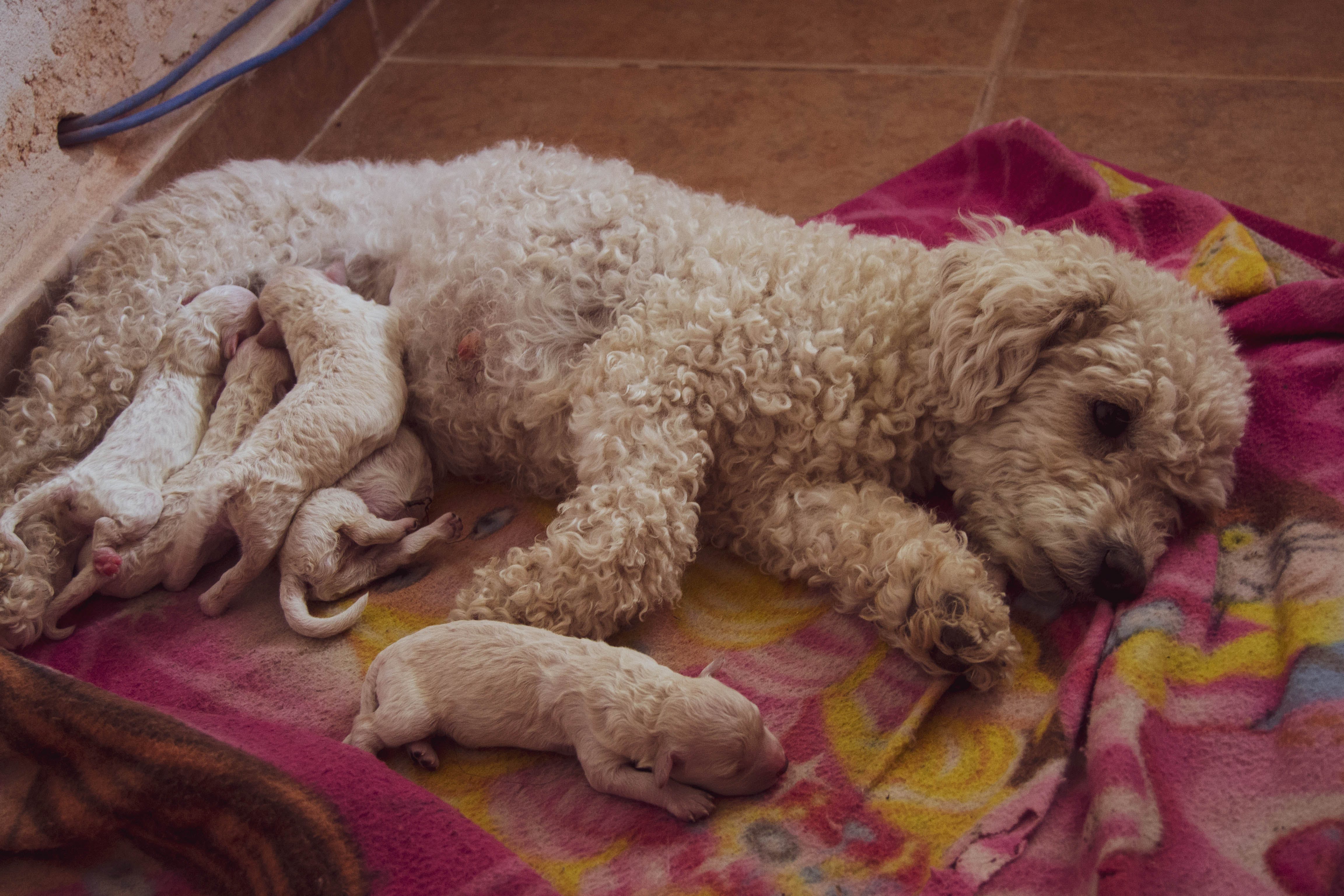Disclaimer:Please refer to the information in this article as a guide only. If you are worried about your pet’s health or behavior, it’s best to contact your veterinarian.
Are you concerned about the health of your nursing dog? Mastitis – a common yet often overlooked condition, poses significant risks to lactating canines. But what exactly is mastitis in dogs & how can it impact your furry friend’s health and well-being?
HighlightsMastitis in dogs is inflammation of mammary glands, often from infections.Treatments range from antibiotics to surgery based on severity.Preventive measures include clean living areas and regular vet check-ups.Early detection and treatment adherence are key to recovery.
Mastitis is mammary gland inflammation in dogs, often due to bacterial or fungal infections, and manifests as acute, septic, chronic, or gangrenous. Symptoms start with swollen glands and poor puppy growth, leading to ulceration. Treatment varies, from antibiotics to surgery, depending on severity.
There is a lot to talk about mastitis. Let’s understand the causes, symptoms, and treatment options for mastitis in dogs in this article in detail, ensuring the health and well-being of your beloved pet.
The information provided herein is for informational purposes only. Please refer to ourdisclaimerfor more details..
Table of ContentsWhat is Mastitis in Dogs?Types of MastitisCauses of Mastitis in DogsClinical Signs of MastitisEarly SignsAdvanced SymptomsMastitis Diagnosis MethodsTreatment of Mastitis In DogsOutpatient TreatmentHospitalization and SurgeryPrevention StrategiesSanitary MeasuresOther PrecautionsPrognosis and RecoveryConclusion
What is Mastitis in Dogs?

Image credits:Briseed ~
In dogs, mastitis means their mammary glands are inflamed. This usually happens in nursing female dogs but, it can affect any breed or age. Most often – it’s nursing mothers who get it. The inflammation usually comes from bacterial or fungal infections.
Types of Mastitis
Let’s look at thedifferent types of Mastitisin dogs. Each type has its own features:
Causes of Mastitis in Dogs

Image credits:SandeepHanda
When looking into why mastitis happens – it’s important to know that it doesn’t just come out of nowhere. Many things can lead to it:
Some dogs are more at risk of getting mastitis, such as:
Clinical Signs of Mastitis
Navigating the complexities of mastitis in dogs requires a keen eye for symptoms. This condition, often overlooked, can escalate from subtle signs to severe health issues – making early detection crucial.
Early Signs
The first symptoms of mastitis in dogs can be easy to miss. They’re often mild. Key early signs are:
Advanced Symptoms
As mastitis gets worse, the symptoms become clearer and more worrying:
In addition to these, your dog may also experience fever, dehydration, weight loss, lethargy, and restlessness.
Mastitis Diagnosis Methods
In numerous instances, mastitis can be identified through a physical assessment of signs. And, on occasion, your veterinarian might suggest laboratory examinations to validate the diagnosis or eliminate alternative conditions.
Treatment of Mastitis In Dogs
When it comes to the treatment of mastitis in dogs, the approach varies based on the severity of the condition.
Outpatient Treatment
For mild cases of mastitis – your vet may recommend outpatient treatment so that the dog can stay with puppies and this includes:
Hospitalization and Surgery
In more severe cases, hospitalization might be necessary, involving:
Important Note:It’s crucial torefrain from allowing to nurse puppiesuntil your vet approves. Because infection and medications can pass through the milk to the puppies, posing significant risks.
Prevention Strategies
Preventing mastitis is key to avoiding the distress it causes to both dogs and their owners. Here are some effective prevention strategies:
Sanitary Measures
Other Precautions
Prognosis and Recovery
As we turn our attention to the prognosis and recovery from mastitis in dogs, it’s important to understand the varied outcomes based on the severity of the condition. In most cases – the prognosis for mastitis in dogs is positive, with signs typically resolving within two to three weeks of treatment. However, the key to a successful recovery lies in:
Seek Further Veterinary Care If:
Conclusion
Knowing all about mastitis in dogs is very important. It helps you take action quickly and manage it well. This condition can be treated but if you don’t pay attention to it – it can get worse fast. This can be bad for both the nursing dog and her puppies. So, always remember: catching it early and following what the vet says is crucial. This ensures your dog recovers fast and fully. As dog owners, we have the duty to take good care of our pets.
191views191views
Pet Wellness